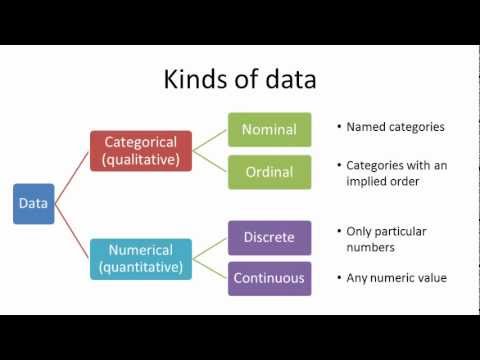What is discrete, categorical, ordinal, numerical, non-numerical and continuous data?
1 Answer

Explanation:
Largely there are two types of data sets
- Categorical or qualitative
- Numeric or quantitative
A categorical data or non numerical data - where variable has value of observations in form of categories, further it can have two types-
a. Nominal b. Ordinal
-
a.Nominal data has got named categories
e.g. Marital status will be a nominal data as it will get observations in following categories- Unmarried, married, divorced/separated, widowed -
b.Ordinal data will also take named categories but categories will
have rank.
e.g. Risk of acquiring a hospital based infection will have ordinal data set with categories like High, Medium and Low
Numeric data- where variable takes numerical value. It can again be of two types
a. Discrete b. Continuous
- a. Discrete data has distinct set of values, which are countable and belonging to whole numbers set
e.g. Number of students in the class. This variable can take value from 0 to 100 or more, but it will be countable number.
whereas,
- b. Continuous data has defined range, and value of observation can take any value within that interval. In this case value belongs to set of real number within given interval.
e.g. Height of students in the class first. This variable can take any value between 2.5ft to 4ft

